Blog 3
Just south of Twyfelfontein is Brandberg mountain, an enormous extinct volcano that was once the same scale as Kilimanjaro, and roughly the same age. It erupted about 200 million years ago and blew off it’s top, sending volcanic material all over the world and reducing its height to 2500 metres. Heading north from Twyfelfontein, with the ghostly shadow of Brandberg mountain behind us, we passed through an ancient volcanic landscape of granite and basalt rocks, then more open valleys flanked by sandstone-based mountains where the sedimentary layers have been thrust skywards and then weathered gradually over the millennia to form mesas and buttes.
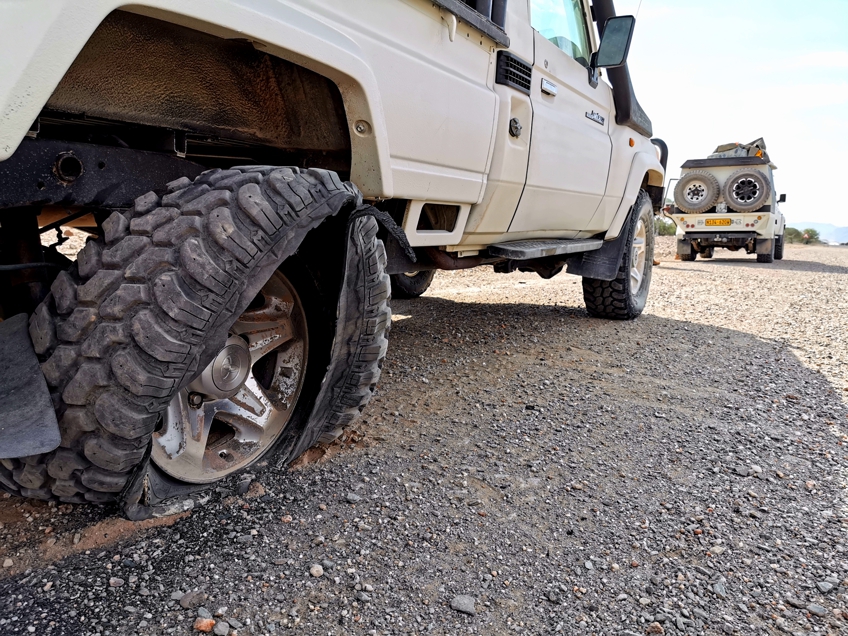
Along one particular windswept plain, where the bare ground had apparently been denuded by overgrazing, the surface was dotted by what are commonly known as ‘fairy circles’. These are unexplained circular patches of land where nothing will grow that have been featured in folklore.
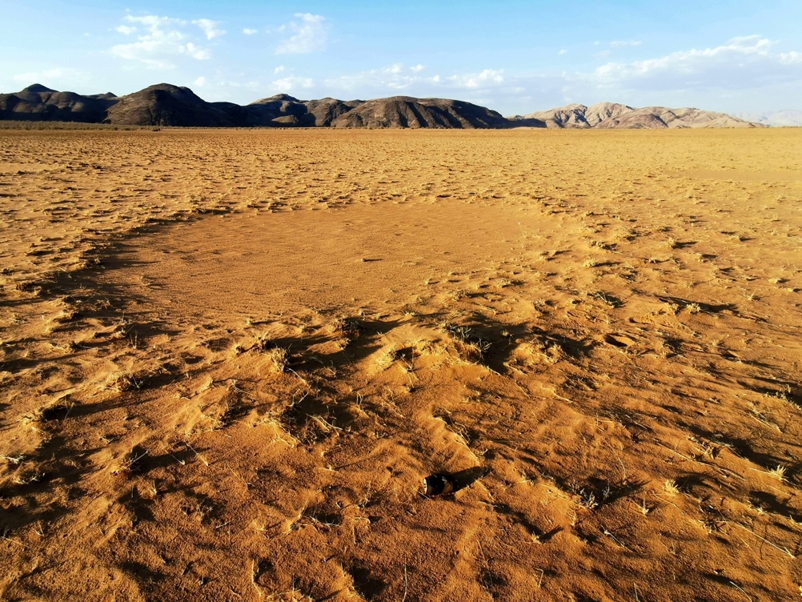
Purros village
Purros is the village that we are planning to electrify with solar micro-grids in September. This was an opportunity for me to meet the people, see the village and get an understanding for how these Herero people live and what they need. We were given rooms to stay at the Purros Community Guest Lodge, about 3km from the village, nestled on the banks of the Hoarusib River. The lodge was built approximately ten years ago with the aim of producing an income for the community. It’s well-equipped, beautifully built stone chalets have fresh running water, but no electricity. Unfortunately, the community cannot afford the costs of running it. Jimmy has invested in a partnership that will support the running of the lodge and soon it will be operational for tourists. It was pretty comfortable for us though.
The first aim of the day was to look for the desert-adapted elephants that roam along the course of the ephemeral river. Desert-adapted elephants are taller than other elephants because they have to walk long distances to find food and water and, being so hot for much of the year, it is advantageous to be further away from the heat radiating from the ground. In the morning we discovered fresh elephant tracks through our camp, so the hope was that they weren’t too far away. About 3km up the river we spotted a male with a two-month-old calf foraging the treetops. Elago explained that it was very unusual to see the father looking after its young. Apparently, the mother had died not long after it was born leaving two young calves; one was with the rest of the herd, this one with the father. We followed it for more than half an hour as the pair moved slowly through the trees along the bank. The drone footage Kas shot is fantastic and I was in heaven taking photos from the car window.
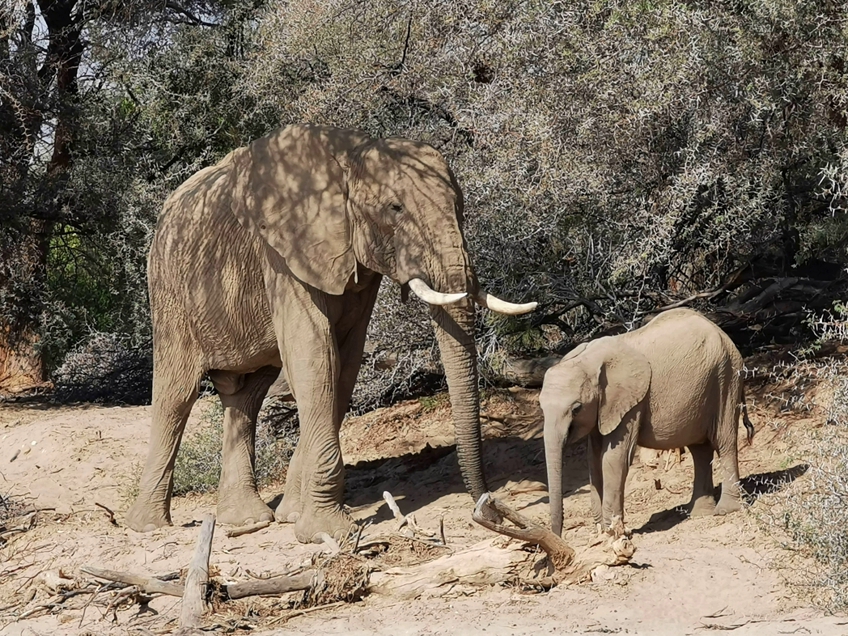
Kai (Kavesina), one of the community leaders arranged a meeting with the community under a shady tree beside the Purros Conservancy office. The village is very spread out, with often 100 metres between houses, but gradually a good cross-section of the community showed up. Many of the women were traditionally dressed in long colourful dresses reminiscent of the clothes they would have worn during the German colonial occupation a century ago. Their T-shaped headwear represents cow horns. Herero are traditionally cattle herders and so to them, the cow is sacred as it provides them with what they need to survive. The women wear their traditional dress with pride, not just in Purros – I noticed them in some towns on the drive up from Windhoek.
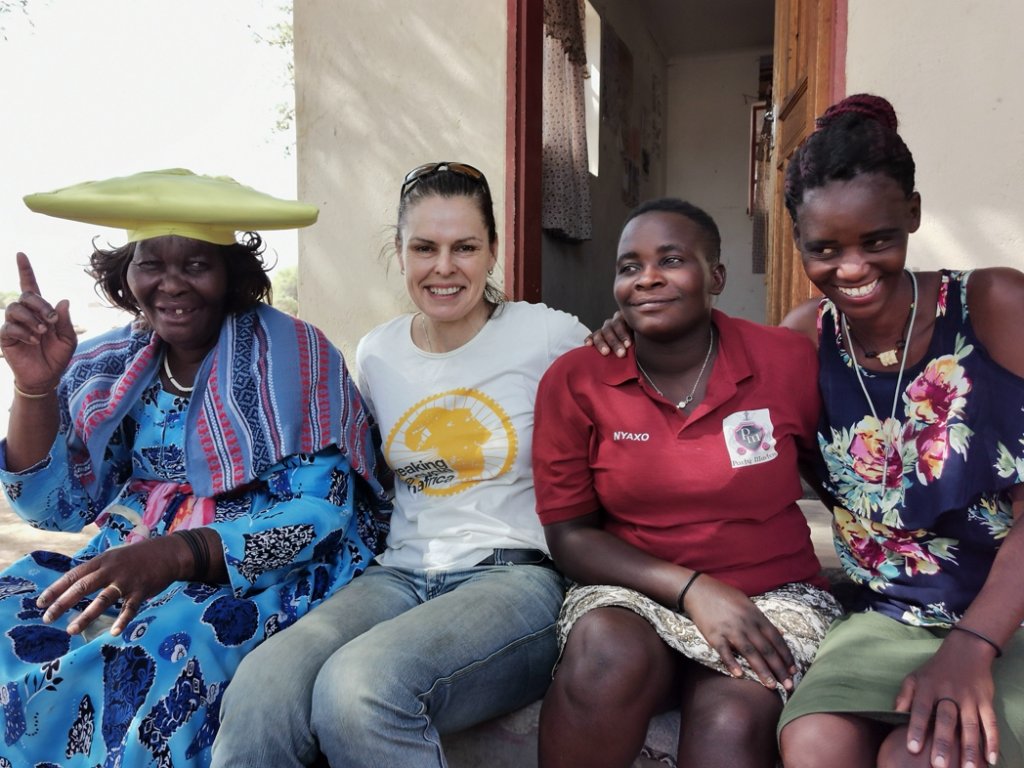
Kai introduced me to the group and acted as interpreter. I explained my background and how this project evolved, then about what they can expect; how the Global Himalayan Expeditions project will work with the participation of paying tourists. They had lots of good questions and I was careful not to promise anything we couldn’t deliver to avoid raising unrealistic expectations. They seemed very happy with this; some of the women performed little dances at the end of the meeting.
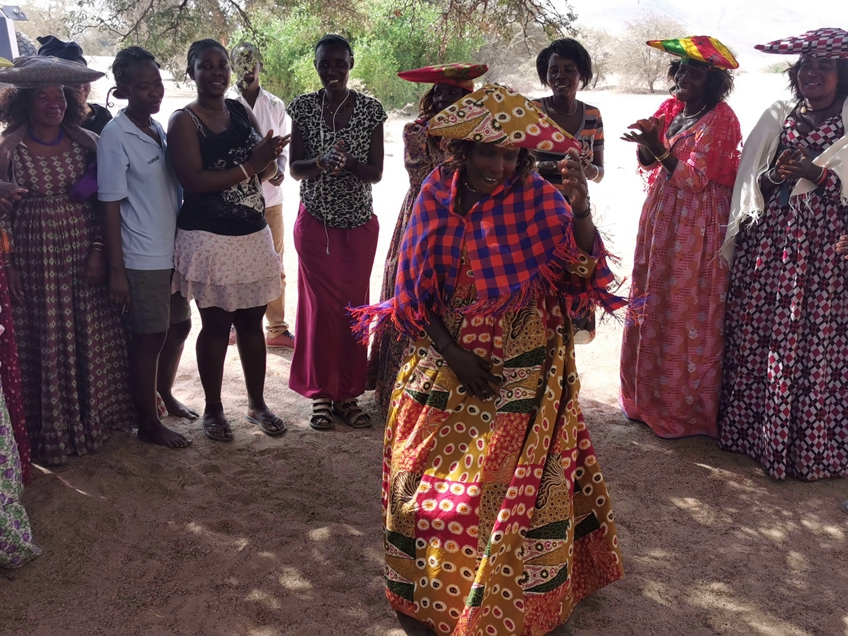
We then visited the Purros Primary School that had 130 students who learned in three mixed classrooms. A solar power system and battery storage were set up about six years ago, but it wasn’t working very adequately. The school is poorly equipped and they seem to rely on donations from outsiders. Elago, in keeping with this tradition, donated a bag full of educational materials – pens, coloured pencils, paper, etc – that he had bought himself.
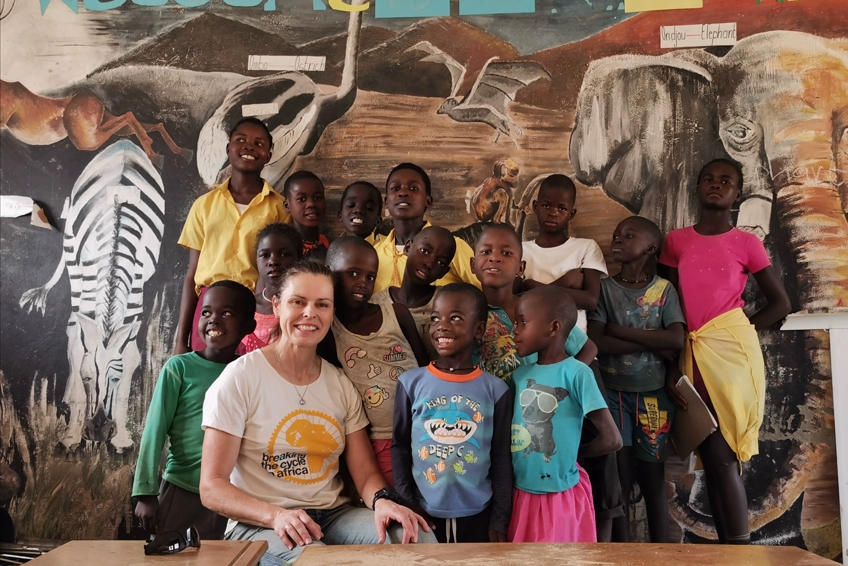
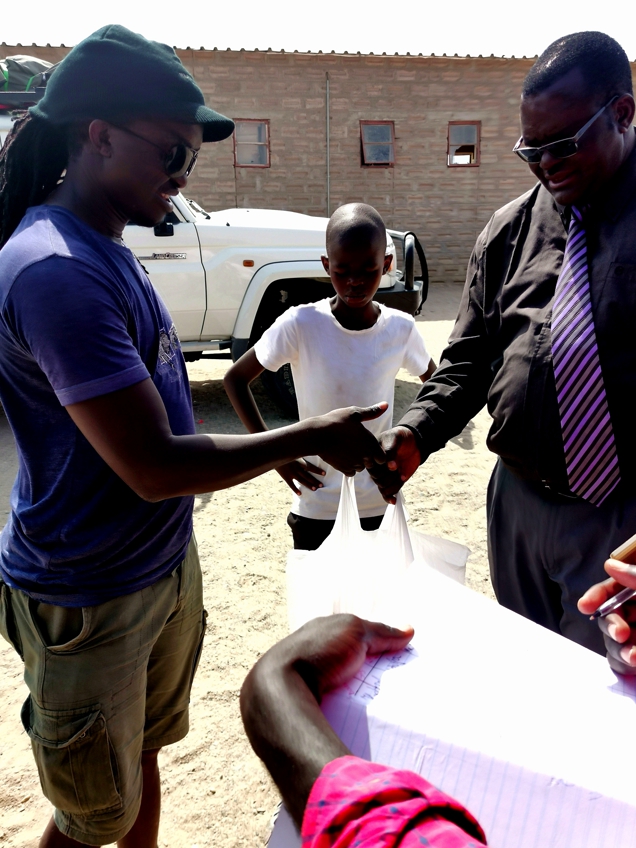
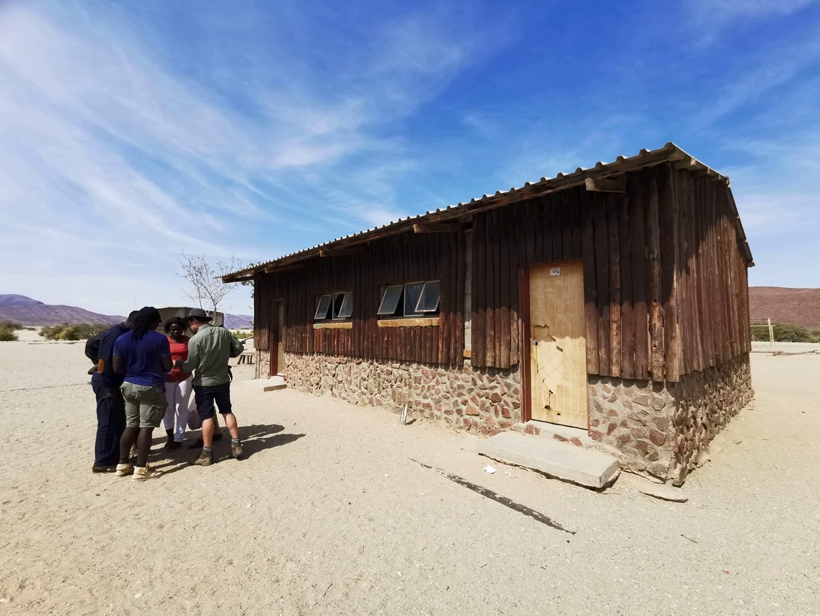
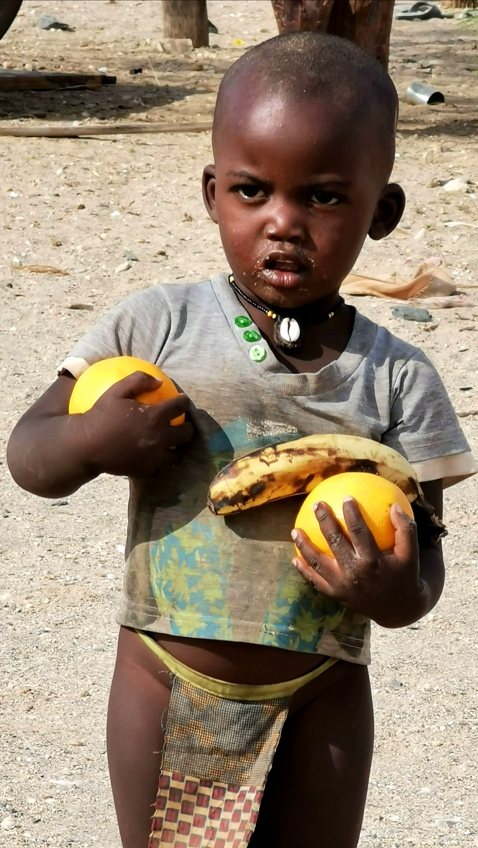
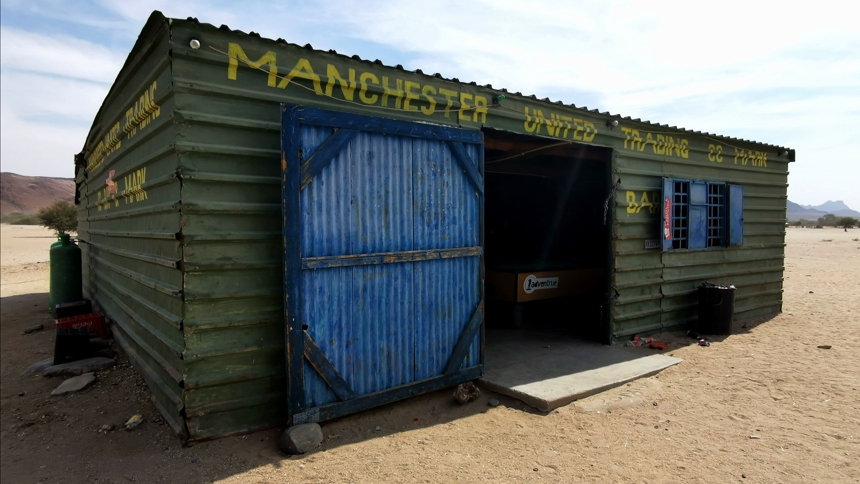
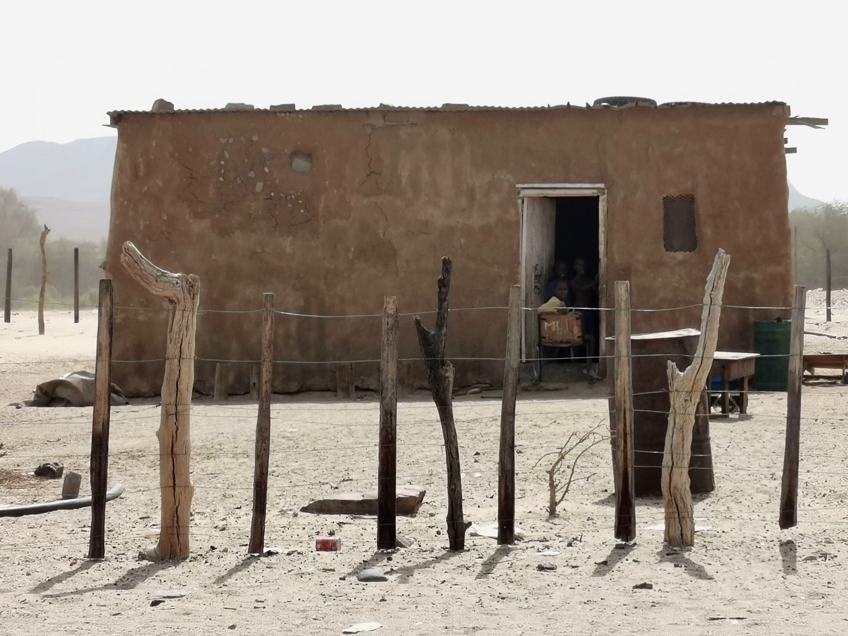
As we were about to set of towards the coast (about 60km away), Elago called Jimmy and found out that the permit that was agreed, still was not signed by one individual. We were unable to enter the protected Skeleton Coast Park without the signed permit. Apparently, the first permit was one where they required us to go a different route over part of the region between Walvis Bay and Luderitz (in the second half of the journey). After our meeting in Windhoek, it was changed to enable us to go all the way down the coast, but this wasn’t changed on the permit. Jimmy had spent two days negotiating and waiting in Windhoek. Now the permit has been changed, but we are waiting for the one signature. We have to stay in Purros because the last place we can print the permit is at the upmarket Elephant Lodge nearby – last last chance to produce the hard copy of the permit needed before entering the park. This is immensely frustrating as it compromises my ability to start the expedition on time. From Purros there is a 7 hour drive to get to the mouth on the Kunene River.
In the late afternoon, we filled in time by following the Hoarusib River Canyon a few kilometres downstream. A small rivulet trickles through the valley forming an oasis for wildlife and cattle. Eventually, it flows into the ocean about 60km away. We were again fortunate to see a lone male elephant at very close quarters, a troop of baboons, two giraffes and all sorts of birds.
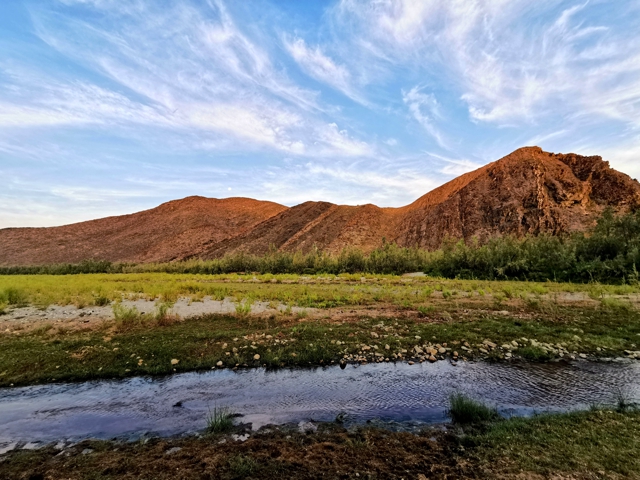
Let’s hope the permit is signed early enough tomorrow so we can move on.
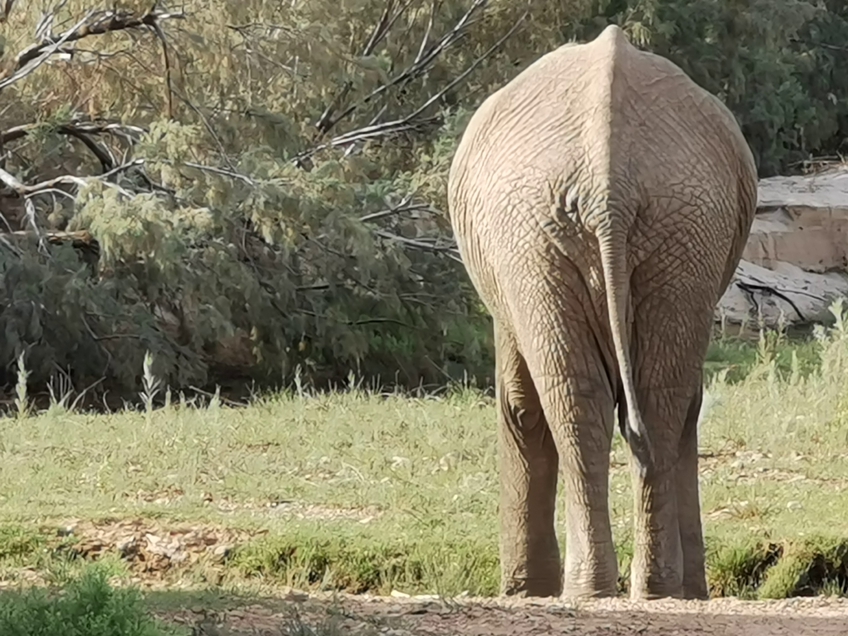









Is seems the baby elephants can survive without mothers milk. Do you know how long the babies have been without their mother?
The kids look happy. Is there a sugar habit as we saw in Somalia?
Hi Kate, all most interesting .
Keep going well.
Very best wishes , Kit
Dear Kate, thank you very much, it is all so interesting. The bestest of wishes, Merike